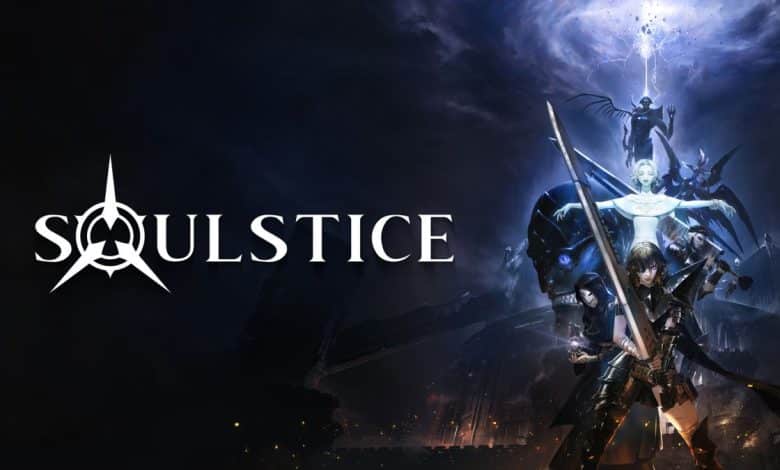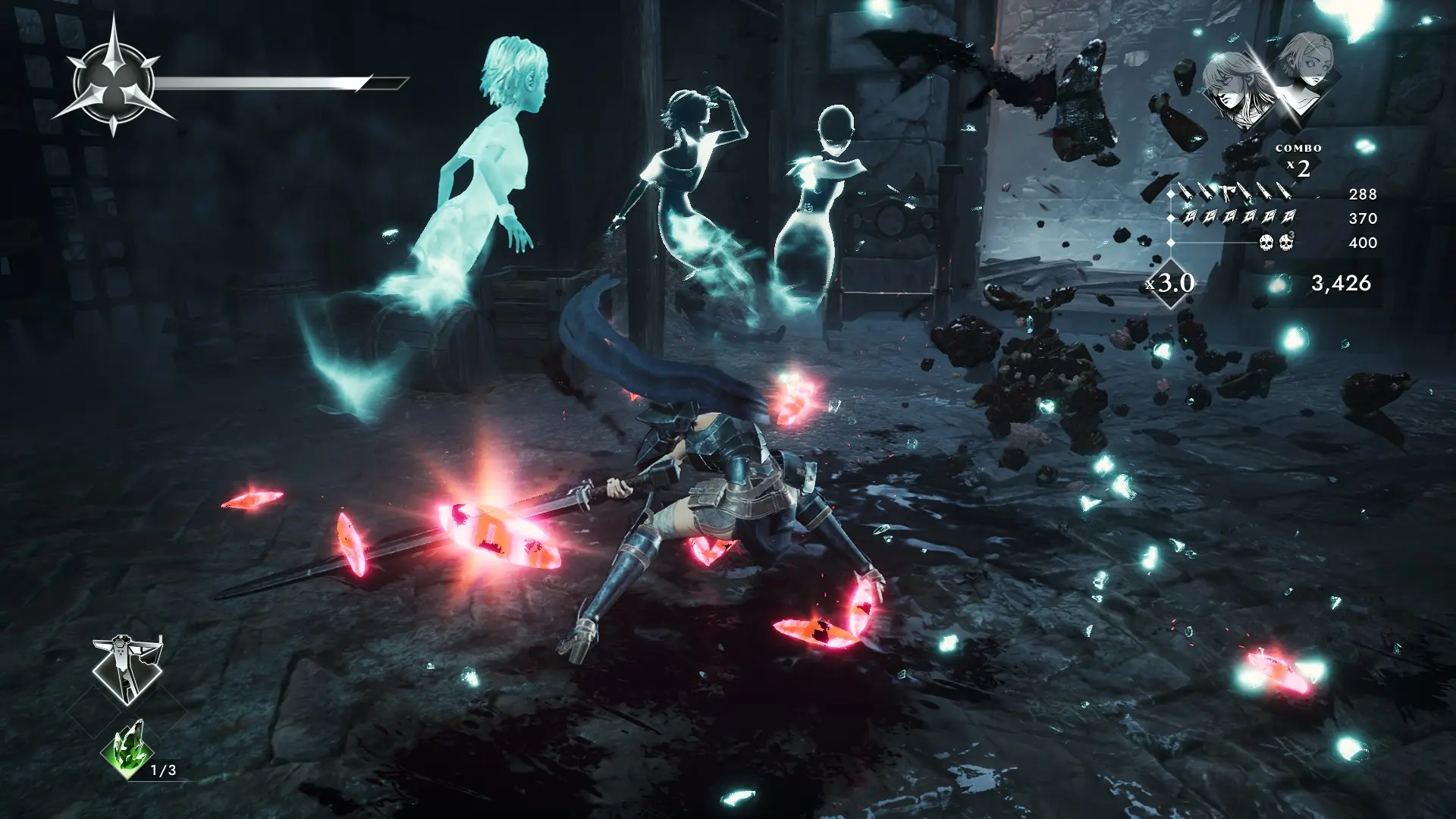
SOULSTICE
I think that the review could not start differently than the following statement: Soulstice is NOT another souls-like game. Yet. As much as its name alludes to the "fashion" of the time (we've lost count, literally), Reply Game Studios' action game attempts to apply another familiar approach, that of Devil May Cry (mostly), Bayonetta and Ninja Gaiden. Admittedly, an equally difficult task, as the Japanese hold the genre's scepter firmly, and the relatively recent Devil May Cry 5 was, to say the least, excellent.

In some fantasy world, reminiscent of manga/anime productions such as Berserk and Claymore, the kingdom of Keidas was suddenly hit by a mysterious rift, which caused hundreds of murderous wraith to invade and mercilessly slaughter the population. The Order of Ashen Blades, the strongest line of defense in the city, sends its best warriors, known as Chimaira, who are bound by a spirit that grants them immense power. One such duo is the game's protagonist sisters, Briar (warrior) and Lute (spirit), who for some reason, are not as friendly as the rest of the Chimaira. Consequently, when the Order's counterattack is unleashed, they are left behind, with no fellow warriors waiting for them. But being fully loyal to the Chimeras' doctrine, they must travel, even if unassisted, to the center of the city to prevent the expansion of the rift and, of course, save the entire world from extinction.

Overall, the premise isn't anything awesome, and even with the way it introduces the player to its world, it's a little rough and tumble. Of course, as we progress and learn some things about the girls' past and what the Chimeras represent, it starts to get a bit interesting. In essence, the plot is rather secondary, no matter how much the game tries to create an epic story with constant cutscenes and (slightly cringe) dialogue. The reason is that the action part is what wins the day, although not as strongly as we might expect and want.
Being a hack 'n' slash in the style of Devil May Cry, Soulstice borrows most of the elements that made it famous to action game fans - from the way we start each chapter of the game and upgrade our characters, to the basic elements of the combat system. Two attack buttons then, one with our regular sword and one with our secondary weapon (there are six available in total, unlocked as the game progresses), jump and dash, making up Briar as a very formidable fighter. However, if there's one thing that sets it apart from the rest of the genre, it's the correlation presented between Briar and Lute. The latter, as a spirit, functions relatively autonomously and attacks alongside Briar, however she is the only one who can interrupt an attack. When the relevant indication appears on the screen, we ought to press the relevant button at the appropriate moment and accordingly Lute will perform a move that will (temporarily at least) save Briar from certain damage.

This move is not something we control directly and varies from parry, counter or freeze the enemy to give us the necessary time to move from the point of attack. Besides, Lute has the possibility, by pressing the corresponding button, to create an aura field (blue or red), which on one hand allows us to act with objects in the environment that have the corresponding color (such as platforms), and on the other hand allows us to deal damage to enemies that carry the same color. Keep in mind, however, that auras don't last forever, as every time we activate them, the Entropy meter goes up, which if filled, the Lute disappears for a few seconds, leaving us almost uncovered, with the only remaining solution being continuous dodging.
Consequently, Lute is highly necessary for our survival in the game's thunderous battles, which are quite interesting for the most part, especially in the coveted bosses. They may not reach the level of Capcom's masterful series, however the combat mechanics have their own character, are clearly thought out and with some fairly complex and lengthy skill-trees, which greatly affect the approach and progression of the battles. One problem of concern though is that the aura system gets a bit tedious after a certain point (especially mid-game), especially when different types of enemies start to get mixed into the same battle, requiring regular switching of aura colour. And when some hexes start appearing that resurrect themselves if you don't get to kill the ghost trying to resurrect them, the battles start to become more of a "slog" rather than a pleasure, as a game of this genre should be.

In fact, this is the biggest stake for Soulstice, as in its attempt to set up a deep combat system, somewhere along the way the fun of the thing is lost. The truth is that as a game it's not particularly difficult, at least at the default difficulty level, and the fact that it evaluates the player at the end of each chapter in a rather lenient way shows that it doesn't intend to cause problems for players who aren't as comfortable with action games. However, the thing is that several times, I found myself bored and wanting to finish each chapter, because the constant battles didn't make me feel so keen to relive them, while the infinitesimal puzzles and the almost complete lack of interaction with the environment (only some shiny objects can be broken), significantly limits the gameplay in two versions. In combat and in destroying items to collect orbs (red and blue) used for Briar and Lute's upgrades respectively.
Certainly, a more to-the-point gameplay isn't a bad thing, after all Soulstice is a highly linear experience, with very few paths deviating from the protagonists' path (but they do have quite a few useful goodies to offer, if you spot and follow them). In practice, it includes a lot of gameplay elements from another era, maybe even 20 years ago, whatever that entails. Nevertheless, it's obvious that the game is the fruit of careful and extensive effort, which will certainly be more appreciated by gamers who lived as gamers in that era. I even found the deliberate choice for a fixed camera during the two brothers' wanderings to be very apt, as it creates some very impressive images, which is not the case during the battles. There the camera often turns into a free one and we wouldn't say it has the most ideal implementation. Many times it doesn't follow the action, especially if we decide to lock on an opponent, we'll be fighting more with the camera than with him, and if we happen to find ourselves in a tight space... then good luck. Certainly much better work could have been done on this nerve-wracking part that is capable of creating a lot of frustration in some fights.

Moving on to the technical side, Soulstice includes a cel-shaded approach to the visuals, with a very dark mood, one might say. It's not state-of-the-art, but it works well, and adopts a few influences from the Japanese anime style. Unfortunately, if there's one thing the technical aspect of the game is seriously lacking, it's the game's environments.
It's not that they haven't materialized beautifully, but because they are hopelessly repetitive. Overwhelmingly, the game takes place in the ruined city spaces, with each room we visit being almost identical to the previous one, creating a not-so-pleasant sense of deja-vu. That is, it feels like you're playing in the same chapter over and over again, just with a different layout. Towards the end of the nearly 15-hour adventure, things change slightly, but again, Soulstice suffers significantly in this area. Our impressions in the audio aspect are decidedly better, with the soundtrack proving to be of unsurprisingly high quality, especially during the battles, and the voice-over is satisfying, but it's not helped by the below-average dialogue.

To sum up, Soulstice is a decent hack 'n' slash game that is not ashamed of its influences, but at the same time it attempts to deviate from them by implementing its own version of the battle system. It doesn't do everything perfectly, but for action game fans, it's capable of providing some memorable hours of entertainment.
RATING - 70%
70%
Chimaira
Clearly influenced by Capcom's Devil May Cry, but without the same finesse, Soulstice is aimed mainly at fans of the genre.












Ωραίο άρθρο.
Του χρόνου τέτοιο καιρό θα έχει μπει Humble.
Για το Steelrising θα υπάξει review?
[QUOTE=”bald_killer_clone, post: 607982, member: 103348″]
Ωραίο άρθρο.
Του χρόνου τέτοιο καιρό θα έχει μπει Humble.
Για το Steelrising θα υπάξει review?
[/QUOTE]
Πιθανότατα όχι, εγώ δεν βρήκα έγκαιρα χρόνο και δεν υπήρξε άλλος ενδιαφερόμενος.
Για το Steelirising ενώ σκόπευα να το χτυπήσω με το που βγήκε, διάβασα για σοβαρά performance issues οπότε θεωρώ καλό είναι να περιμένει κανείς για κάποιο patch.